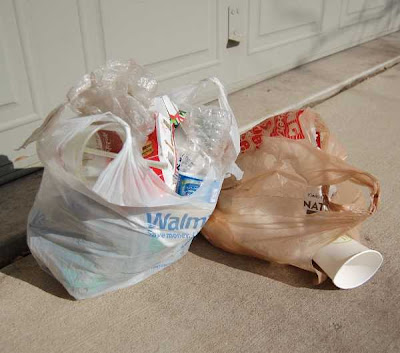"Some people, they don't know junk," says Rosskam, a character in William Kennedy's Ironweed. "It ain't garbage. And garbage, it ain't junk."
Rosskam collected junk – was a "rag man," a collector of cast-off stuff that still had some value or use. And that is what he meant by "junk." He rode around Albany, New York in a horse-drawn wagon, collecting the stuff.
Rosskam's distinction between garbage and junk is useful, at least to me, as I continue my anti-littering crusade.
My intolerance toward litter has grown considerably over the last year. Starting in the summer of 2010 I began taking a shopping bag with me on bike rides, a bag made with ties allowing it to be worn backpack-style. I'd fill it with the discarded bottles and cans found along my bike routes.
Then, toward the end of the year, I began picking up stuff during my walks. Mostly I pick up cans and bottles I later drop into a recycling bin. But I also pick up trash, like candy wrappers and fast food bags. I just can't pass it by anymore. Litter offends me; it's appalling how badly people treat this planet.
Sometimes I come across stuff I won't pick up, as much as it might need it. Cigarette butts are a good example. I did a little Googling and read that four and a half trillion butts are dropped on the ground each year in the United States. (I don't buy that number; it's just too staggering.)
And I don't pick up wet, nasty stuff. I might consider it, but I'd have to bring rubber gloves. You gotta draw the line somewhere.
After my walks, I always sort out the trash from the recyclables and place each in the proper container.
Then I wash my hands.
•
Literary note: Read Ironweed. It's one of my favorite novels, a truly brilliant piece of work.





















